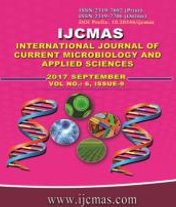


 National Academy of Agricultural Sciences (NAAS)
National Academy of Agricultural Sciences (NAAS)

|
PRINT ISSN : 2319-7692
Online ISSN : 2319-7706 Issues : 12 per year Publisher : Excellent Publishers Email : editorijcmas@gmail.com / submit@ijcmas.com Editor-in-chief: Dr.M.Prakash Index Copernicus ICV 2018: 95.39 NAAS RATING 2020: 5.38 |
The prime reason for the poor performance of livestock in developing countries like India is the seasonal inadequacy of feed, both in terms of quantity and quality. Livestock production is mainly based on use of agriculture by-products and crop residues (including straws, stovers, husks and other crop by-products make up a major portion of animal feed in many developing countries) as feed resource. These residues are low quality fodder with low nitrogen, high lignin contents, poor digestibility and low intake by the animals. The fortification of straw upgrades the nutritional value of poor quality roughage. There are two types of (viz., loose and baled) straw fortification methods being practice in India. In these methods, the straw fortification will be performed in two different steps and in off-field condition. These reasons are leading to make the above methods more time consuming and labour intensive process. Therefore, there is a need to develop and adopt a suitable fortification application system which perform fortification job while baling the straw in the field itself so that, simultaneous fortification cum baling of straw in in-field condition is possible. So that, in addition to improve the nutritional value of straw, it also helps to reduce the time of fortification and labour expenses which will play an important role in traditional fortification methods.
 |
 |
 |
 |
 |